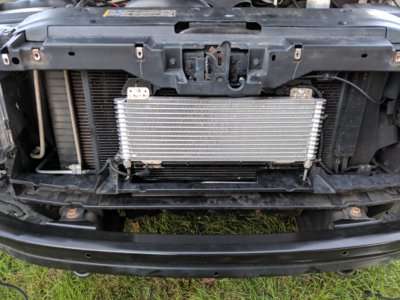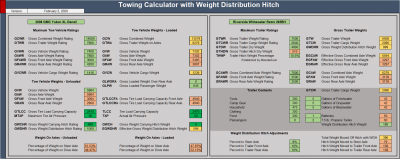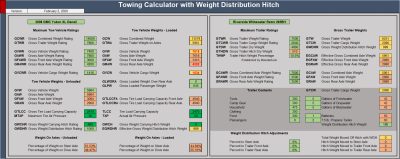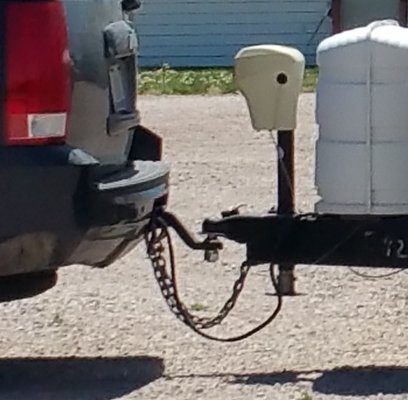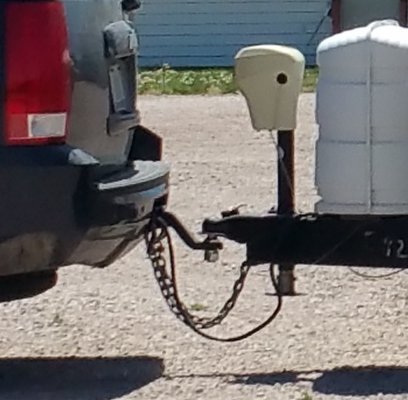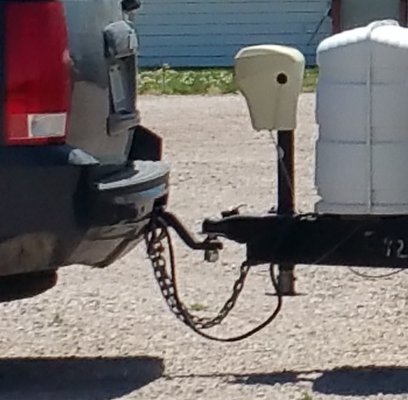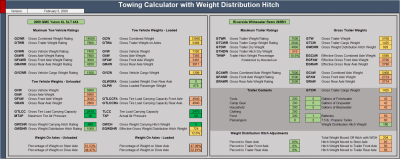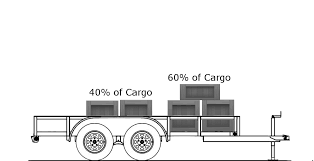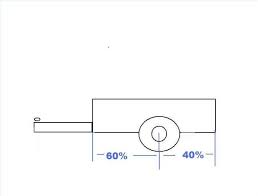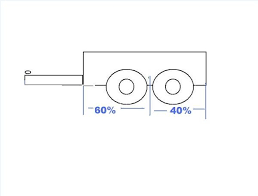optimusprime
Full Access Member
- Joined
- Jul 15, 2016
- Posts
- 128
- Reaction score
- 43
So here is what I have for my calculations. Please let me know if this seems right. I haven't made it to a CAT scale yet but this is a starting point for me.
08 Yukon XL Denali
Towing- 7900#/ 7400#GVWR/ 5,984# Curb weight/ Available Payload- 1416# (per yellow sticker)
Payload in vehicle- Me, wife, 3 kids...645#/ Hitch weight ProPride P3...180#
Available Payload...1416 (-) TV Payload...825#= 591# Payload LEFTOVER for TT hitch weight
I added weight to my kiddos because obviously they are going to grow so I allotted extra for them. This includes ZERO extra cargo inside the Yuk or the TT. Obviously the TW is going to increase the more gear I put inside the TT and if we carry anything inside the Yuk, the payload will only decrease. Add to this another kid if we have one and that number continues to diminish. If allowing for up to 10-15% tongue weight, this leaves me with the ability to only haul a roughly 4000#-5910# trailer fully loaded. If I am doing my math correctly, I would be looking for a TT with a dry weight of 2500-4400# that would have to fit up to 6. Basically, it appears I am SOL for towing a TT with my family and my only option is as stated above, the 2500 Burb. Does anyone else agree with this assessment or am I missing something. Again, thank you all for the time you've spent helping me out.
08 Yukon XL Denali
Towing- 7900#/ 7400#GVWR/ 5,984# Curb weight/ Available Payload- 1416# (per yellow sticker)
Payload in vehicle- Me, wife, 3 kids...645#/ Hitch weight ProPride P3...180#
Available Payload...1416 (-) TV Payload...825#= 591# Payload LEFTOVER for TT hitch weight
I added weight to my kiddos because obviously they are going to grow so I allotted extra for them. This includes ZERO extra cargo inside the Yuk or the TT. Obviously the TW is going to increase the more gear I put inside the TT and if we carry anything inside the Yuk, the payload will only decrease. Add to this another kid if we have one and that number continues to diminish. If allowing for up to 10-15% tongue weight, this leaves me with the ability to only haul a roughly 4000#-5910# trailer fully loaded. If I am doing my math correctly, I would be looking for a TT with a dry weight of 2500-4400# that would have to fit up to 6. Basically, it appears I am SOL for towing a TT with my family and my only option is as stated above, the 2500 Burb. Does anyone else agree with this assessment or am I missing something. Again, thank you all for the time you've spent helping me out.

